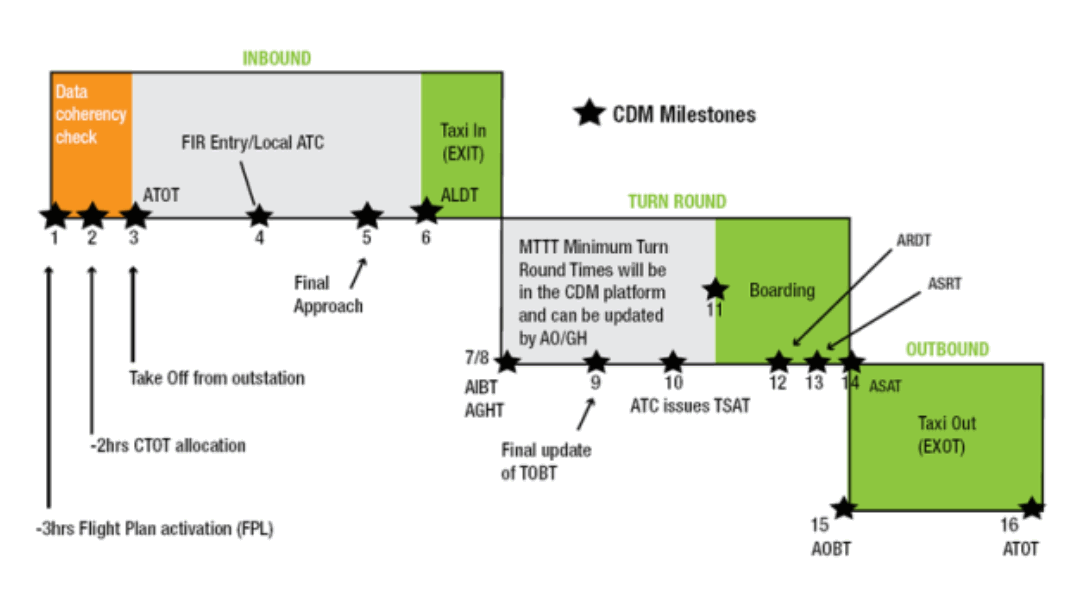A-CDM Procedure
Airport Collaborative Decision Making (A-CDM) is an operational procedure to improve air traffic management through better information sharing among all the stakeholders.
This new procedure increases efficiency and punctuality by improving air traffic flow and airport capacity management, reducing delays by improving events predictability and optimizing resources utilization. In other words, it represents a change in the operational methodology in the turnaround management, from “first come – first served” to “first ready – first served”. One of the main objectives of A-CDM is to estimate the “Target Take Off Time” (TTOT) as thoroughly as possible in order to improve the “en route” and “sector” planning by the European ATM; this can be reached by implementing a series of “DPI” (Departure Planning Information) and “FUM” (Flight Update Messages) sent to the Network Management Operations Centre (NMOC/CFMU). Therefore Airport CDM can be considered as a basis for connecting the airport to the ATM system.
A-CDM is, therefore, a procedure that foresees a better collaboration between all the stakeholders using more updated, better quality and unique meaning data; all the procedures and communication policies will be standardized in order to reduce any possible error source.
A-CDM procedure begins with the ATC flight plan transmission 3 hours before the EOBT (Estimated Off Block Time) and continues through 16 milestones that describe the status of the flight in all its phases up to the take off (ATOT – Actual Take Off Time).
A-CDM Expected Benefits
All A-CDM partners will benefit from the project:
-
Aircraft Operators: better adherence to schedule; taxi times reduction (fuel consumption reduction)
-
Ground Handlers: better planning and resources utilization
-
Airport Operators: reduced environmental impact; increased punctuality; better planning and management of gates and stands; maximum capacity utilization
-
ATC: better pre-departure sequence; increased punctuality and maximum capacity utilization; increased traffic predictability
-
NMOC/CFMU: better adherence to slots, optimized use of airspace capacity
-
Project Team
A-CDM IMPLEMENTATION MANUAL A-CDM Implementation Manual
Project team
-
SEA - Aeroporti di Milano Spa
-
ENAV
-
ENAC
-
EUROCONTROL
LEAFLET A-CDM MALPENSA
Useful Links
www.euro-cdm.org
A-CDM ACCESS FORM A-CDM Access Form
E-mail
infoacdm@seamilano.eu





